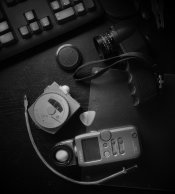Paul Howell
Subscriber
For years I used a 1% spot meter and a Weston Ranger 9 or Master IV along with the internal meters on my 35mm cameras. Then I started to us a 35mm with matrix meter as my basic meter for MF and LF. I started with a Sigma SA 7 with 50mm 2.8 then moved to a Minolta 600SI with 35 to 70, I can switch between matrix or spot and match the view of the MF or LF with zoom. Then again there times when a incident meter works best and I use the Weston Master IV with a inversion cone, or if backpacking I will still carry the Ranger 9. .














